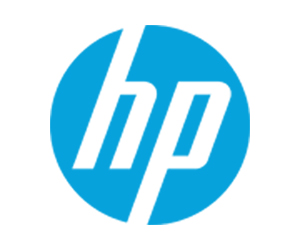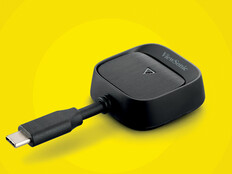Partnering To Create a More Seamless Classroom Experience
Earlier this year, AMD and HP introduced a suite of HP notebook, desktop and workstation devices powered by AMD processors. It includes new AI PC desktops to complement HP AI laptops and workstations, Angeles says.
Within that partnership, AMD infuses the core value of optimization around AI, resulting in efficiency, better battery life and the ability to run multiple applications simultaneously without overheating.
The new Ryzen™ processors from AMD are built to handle AI workloads with advanced neural processing units (NPUs) that work in concert with robust CPUs and GPUs. HP devices with AMD processors also meet or exceed industry standards for AI readiness, Angeles says: Though 40 trillion operations per second is considered the baseline for AI applications, most devices in the HP/AMD portfolio deliver more than 55 TOPS, making them well suited to tools like Microsoft’s Copilot.
“If we’re talking about key differentiators within the portfolio and our partnership with HP, that’s certainly a differentiator,” Angeles says.
Higher TOPS also enable HP/AMD devices to employ unified memory, allowing end users or IT groups to redistribute memory on the fly among the GPU, CPU and NPU based on application demands. For example, in a classroom using computer-aided design software, teachers could reallocate memory to optimize graphics-heavy workflows.
Seamless Deployment and Support for Teachers To Focus on Students
K–12 districts also value the ability to deploy devices quickly, especially when IT teams are small, says Angeles. AMD chips stand out for their ability to support fast reimaging.
“In terms of productivity workflows for the IT environment, it actually does make it easier for them to push out these devices and deploy them,” he says.
With cybersecurity a priority, Ryzen™ PRO processors incorporate AMD PRO Security, adding another layer of protection to HP’s security features.
“Because young kids may be operating these devices, we want to make sure they’re as secure as possible to keep their identities safe within the school environment,” says Angeles.
Future proofing is also key as schools seek to extend device utility. According to Angeles, a common question from decision-makers is, “What can we do to maximize the ROI in purchasing these devices for faculty and staff?”
Optimizing AI performance helps boost ROI by enabling teachers and staffers to work more efficiently. Teachers are increasingly using AI to generate and personalize lesson plans and to help students explore AI through STEM and other activities. For staffers, AI tools can reduce time spent on manual tasks such as drafting emails and summarizing meeting notes.
By investing in HP AI-ready devices with AMD Ryzen™ processors, K–12 districts can equip their teachers and staffers with high-impact capabilities today while ensuring those devices can handle increasing AI workloads in the future, Angeles says.
Brought to you by:











